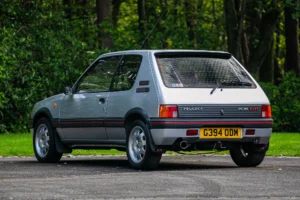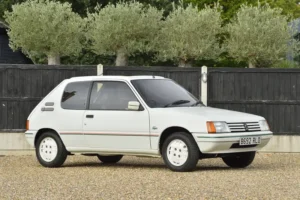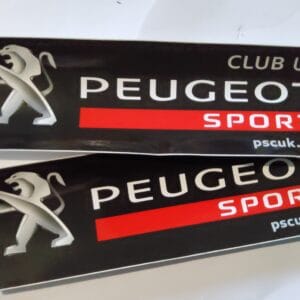
| Overview | |
| Manufacturer | Peugeot |
| Production | 1989–1999 1995–1999 (facelift) |
| Designer | Pininfarina |
| Body and chassis | |
| Class | Executive car (E) |
| Body style | 4-door saloon |
| Layout | FF layout |
| Related | Citroën XM |
| Powertrain | |
| Engine | · 2.0L XU10 I4
· 2.0L XU10 J4R 16V I4 · 2.0L XU10 J2TE turbo I4 · 3.0L ZPJ V6 · 3.0L ZPJ4 24V V6 · 2.9L ES9J4 DOHC 24V V6 · 2.0L XUD11 BTE 12V TD I4 · 2.0L XUD11 A 12V diesel I4 · 2.4L DK5ATE 12V TD I4 |
| Dimensions | |
| Wheelbase | 2,799 mm (110 in) |
| Length | 4,763 mm (188 in) |
| Width | 1,798 mm (71 in) |
| Height | 1,419 mm (56 in) |
| Curb weight | 1,500 kg (3,307 lb) |
The Peugeot 605 is an executive car produced between 1989 and 1999, with a facelift in 1995. The 605 was a saloon built on the same platform as the Citroën XM, and was successor to the critically well received, but slow selling Peugeot 604, which went out of production four years earlier. The popular Peugeot 505 model was thus phased out in the end of the 1980s and beginning of the 1990s in favour of two cars, the large family car 405 and the executive car 605.
Peugeot kept the estate version of the 505 in production until 1992, and had been planning to replace it with an estate version of the 605, but plans for this model to be produced were eventually abandoned.
It was launched in July 1989 in left hand drive form, and was launched onto the British market during the first half of 1990, in right hand drive form. At the time of the original launch, only petrol engines were available. In April 1990, the turbodiesel followed, and then the naturally aspirated diesel was added in autumn 1990.
High equipment levels, a luxurious interior, a smooth ride, and exceptional handling were strong points for the 605. But Peugeot had always struggled to succeed with large cars outside France, and the 605 was no different. It was too similar in design and appearance to the smaller Peugeot 405 to command a price premium, while its dashboard also drew criticism for its uninspired design.
Also like the XM, the 605 initially suffered from quality issues that resulted in numerous breakdowns or malfunctions (particularly with the ambitious electrics). An extensive recall operation took place at great cost, in which most of the engine room wiring and exhaust system (as well as numerous other parts) were exchanged, but by then the damage to the car’s reputation had been done.
In 1995, Peugeot tried to solve the problems by unveiling an extensively revamped 605 (known as the “Phase 2” model); it received a facelift which looked modern at its time, but also the interior was vastly improved by giving it more ergonomic controls and a refreshed look. The naturally aspirated diesel was discontinued at this time, as the new 406 was placed to supplant the lower specification 605s.
Performance and handling were improved as well, and many of the reliability issues were solved. Technological advances were made, most remarkably the side airbags, although sales remained low. After the launch of the well-received Peugeot 406 (that was larger than the 405 it replaced) in 1995, 605 sales dropped to near insignificant levels, and it was quietly dropped in September 1999. The 605’s successor, the Peugeot 607, was launched in the autumn of 1999, and was slightly more successful on the domestic and export markets. The end of 605 production in 1999 spelled the end of the “05” generation Peugeots in Europe after more than twenty years, this generation had started in 1977, with the 305.














